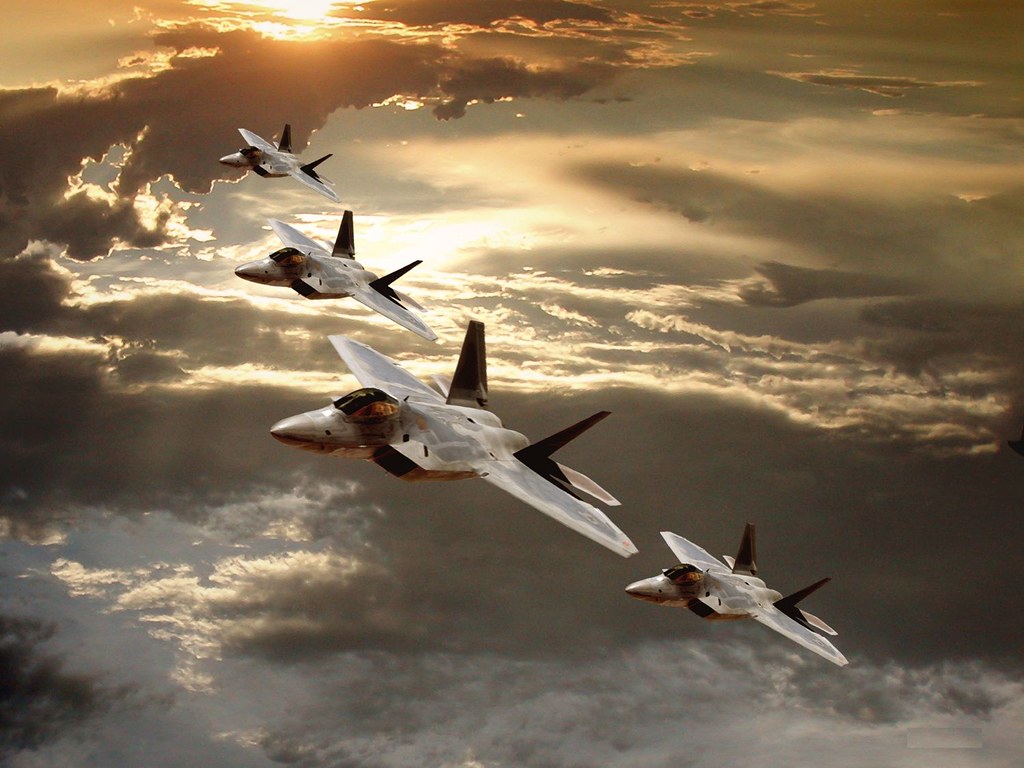
Not long ago, a remarkable event occurred at Kadena Air Base in Japan, stirring the skies as a fleet of the United States Air Force’s most advanced fighters lined up in what is known as an “elephant walk.”

This powerful demonstration of airpower involved an array of cutting-edge aircraft, including F-15C, F-16C, F-22A, and F-35A jets, among others.

The term “elephant walk” dates back to the Second World War, referring to the way large fleets of allied bombers would mass for attacks, their lineup resembling the nose-to-tail formations of elephants heading to a watering hole.

In contemporary terms, the U.S. Air Force uses these exercises to showcase a unit’s capability and the tight coordination needed to mass-launch fully armed aircraft rapidly.

The event at Kadena marks the arrival of new rotational units of F-16Cs and F-22As, welcomed by the base as a farewell bid to the F-35As and Air National Guard F-15Cs.

The Air Force’s largest combat wing and its mission partners at Kadena mobilized a formidable gathering of aircraft, declaring readiness to tackle any air combat mission to uphold a free and open Indo-Pacific.

“The Air Force’s largest combat wing and its mission partners on Kadena Air Base generated an impressive array of some of the most advanced aircraft on earth… ready to perform any air combat mission to ensure a free and open Indo-Pacific,” the base conveyed through a statement.

This show of force came after the deployment of F-22 Raptors operated by the 199th and 19th Fighter Squadrons back to Kadena. “While deployed to the Keystone of the Pacific, 19th and 199th FS Raptors will work in conjunction with additional heavy, reconnaissance, and fourth-generation fighters, and fifth-generation fighter assets that are both augmented to and stationed at Kadena to ensure continued steady-state fighter capabilities in the region,” announced the Air Force.

Although the event was slightly marred by a minor mishap involving a nose gear issue on one of the F-22 jets, the incident, which occurred while the plane was being towed with its engines off, did not overshadow the strategic significance and success of the exercise.

Okinawa, where Kadena is located, is a critical link in maintaining regional stability and protecting essential maritime and aerial routes.

It is strategically situated approximately 900 miles from major cities like Tokyo, Manila, Seoul and is 1,200 miles west of Guam, an American territory key to U.S. military operations in the region.

In a larger context, this elephant walk and the associated rotation of advanced fighters at Kadena underscore the growing partnership and defense collaborations in the region.

Coinciding with these military movements, the leaders of Japan and the United States announced the creation of a new defense network system with Australia.

President Joe Biden highlighted, “I’m also pleased to announce that for the first time, Japan and the United States and Australia will create a networked system of air, missile, and defense architecture.”

“Our defense and security ties with Japan form the core of our alliances and are the cornerstone of regional peace and security in the Indo-Pacific,” Air Force Maj. Gen. Pat Ryder, Pentagon press secretary, stated during a briefing on April 11.
Relevant articles:
– F-22, F-35s and F-15 Fighters Take Part in Big ‘Elephant Walk’, The National Interest
– F-22, F-35s and F-15 Fighters Take Part in Big ‘Elephant Walk’, The National Interest
– What Was the Largest ‘Elephant Walk’ Ever Conducted?, nationalinterest.org
– PHOTOS: Kadena Welcomes New F-22s and F-16s with Elephant Walk, Air & Space

